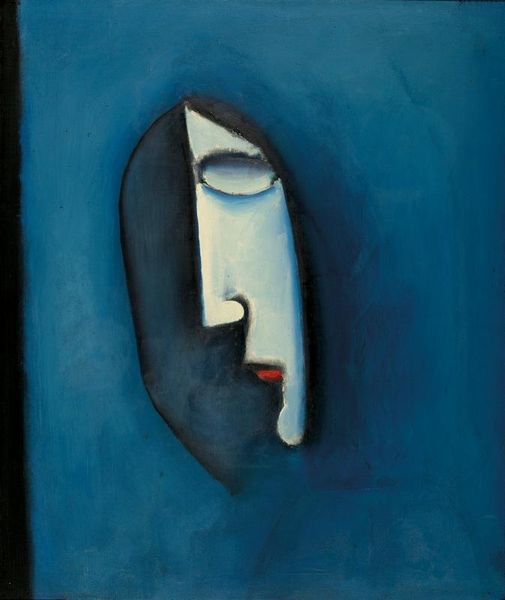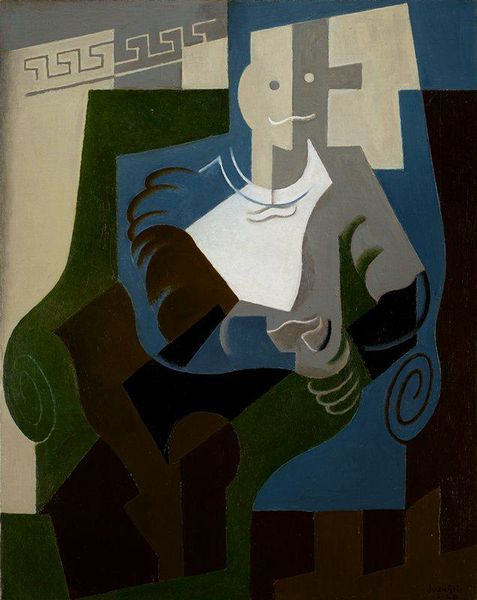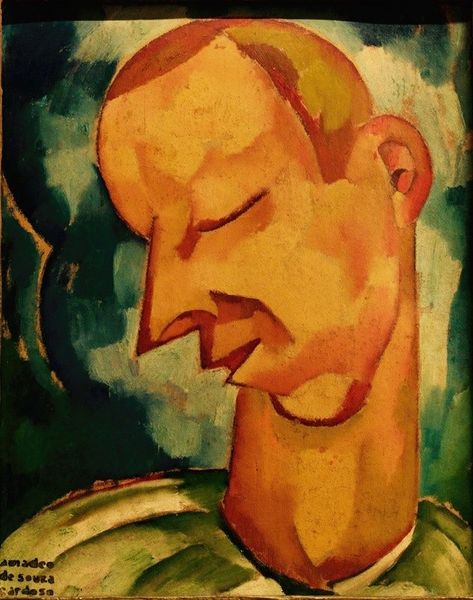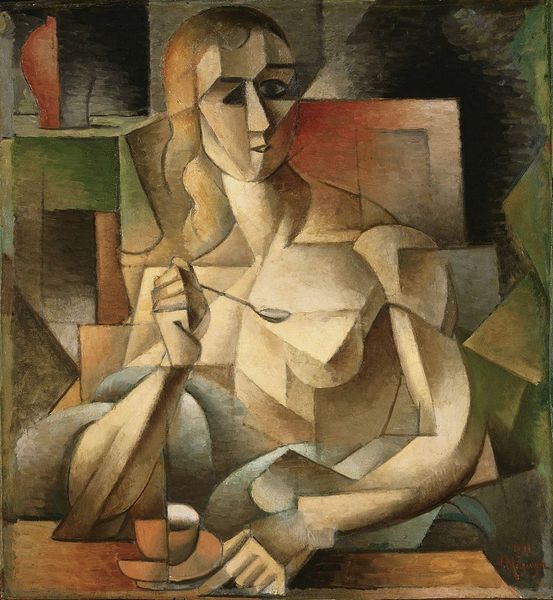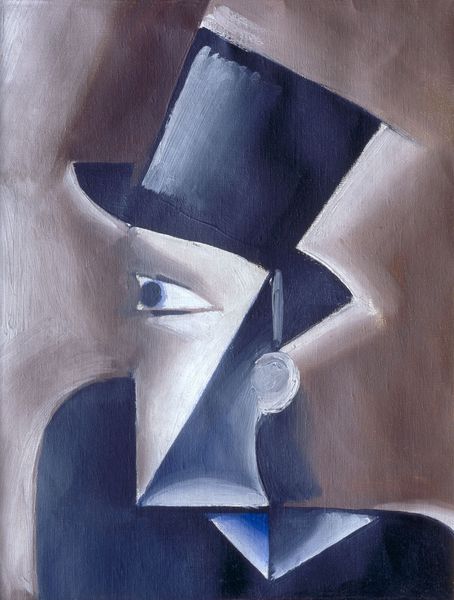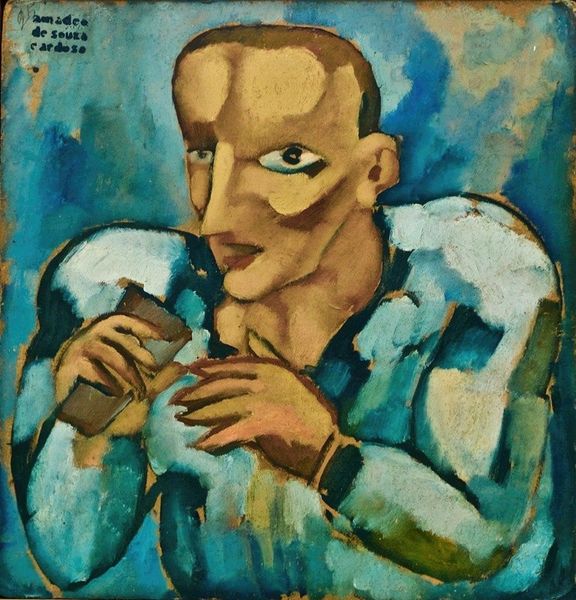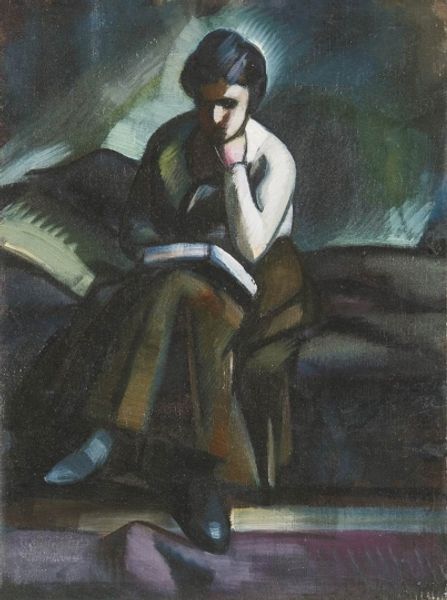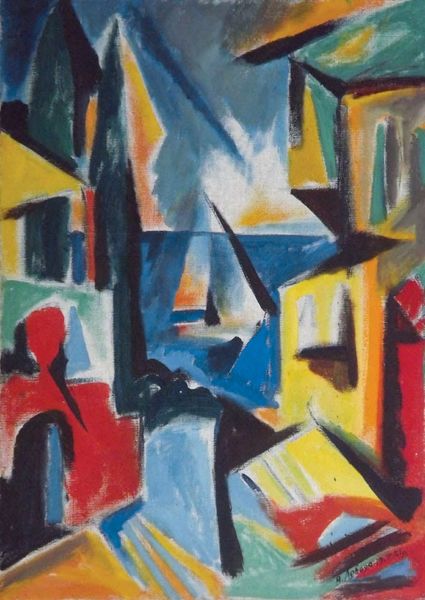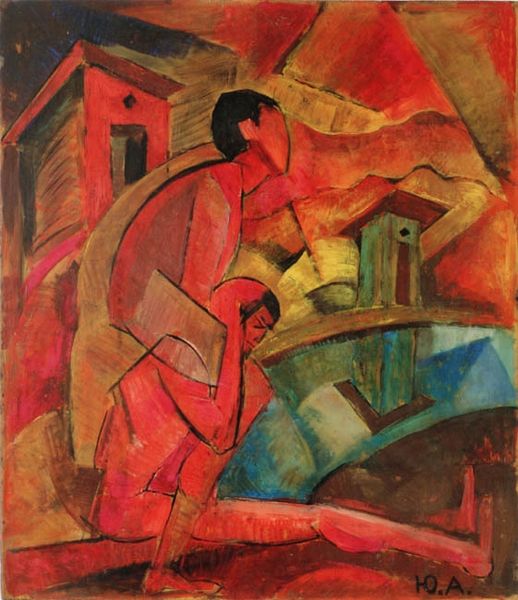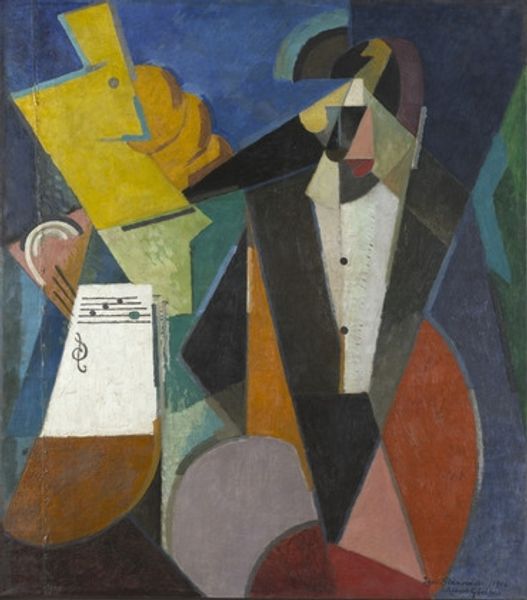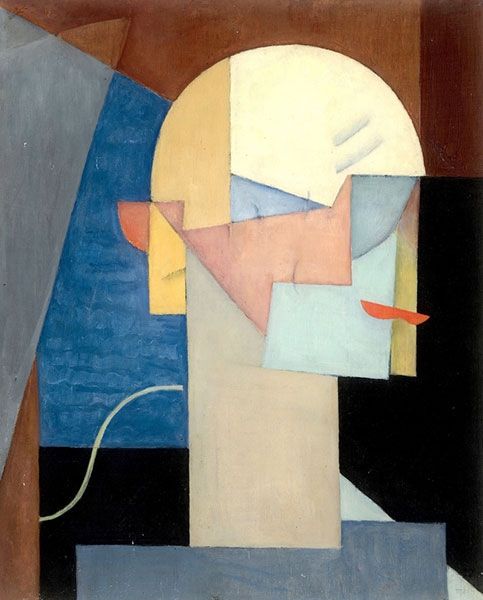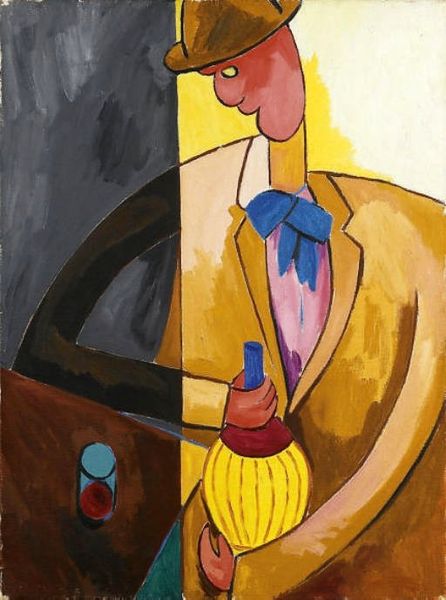
#
abstract painting
#
oil painting
#
neo expressionist
#
acrylic on canvas
#
animal portrait
#
animal drawing portrait
#
facial portrait
#
portrait art
#
fine art portrait
#
expressionist
Copyright: Public domain
Curator: Standing before us, we have "Piják," or "The Drinker," painted by Josef Čapek in 1919. What strikes you most about this piece? Editor: Well, instantly, there's this pervasive melancholy, isn’t there? It’s drenched in blues and sickly yellows – a real hangover palette. He seems utterly alone, boxed in, the smoke from his pipe a ghostly echo. Curator: Absolutely. Notice how Čapek employs this almost blocky, geometric approach to form. It echoes the emerging Cubist sentiments of the time, while the distorted features and unnerving palette inject it with a dose of raw, expressionist feeling. That bowler hat – is it hiding or proclaiming? Editor: Bowler hats always feel like coded messages, don't they? They represent a certain class, a societal expectation of conformity... here, placed upon that almost mask-like, spectral face, it intensifies the feeling of disconnect, of perhaps a soul trapped within rigid social structures. He's literally drowning his sorrows in plain sight. The window offers no escape either. Curator: You touch on something vital. The window is like a little painting inside the bigger painting, bars on the freedom perhaps... Is there something archetypal being evoked in the depiction of that anonymous, isolated drinker? Editor: Definitely. Throughout art history, we find the drinker, from the Bacchic rituals to Parisian absinthe dens. Here, in the wake of WWI, it carries the weight of disillusionment, the futile search for oblivion. Every symbol points to psychological turmoil and the cost of trying to live. Curator: Čapek himself lived through the tumult of the early 20th century. This painting seems less a portrait of a person and more a portrait of an era, and I am struck by the choice of almost muddy and cloying colors. Do you think they further cement the emotional intent? Editor: Absolutely. These are not colors that offer solace, or even clarity. This painting's very tactility screams internal anguish, from the clotted, curdled light on the man’s brow, to the impenetrable wall surrounding the glass. Curator: Piják invites us to consider how artists portray the human condition amidst turmoil, a testament to Čapek's enduring power. It goes beyond a simple scene. Editor: And the lingering effects that choices of image and color might still represent after so much time. These symbols outlast one generation's angst.
Comments
No comments
Be the first to comment and join the conversation on the ultimate creative platform.
